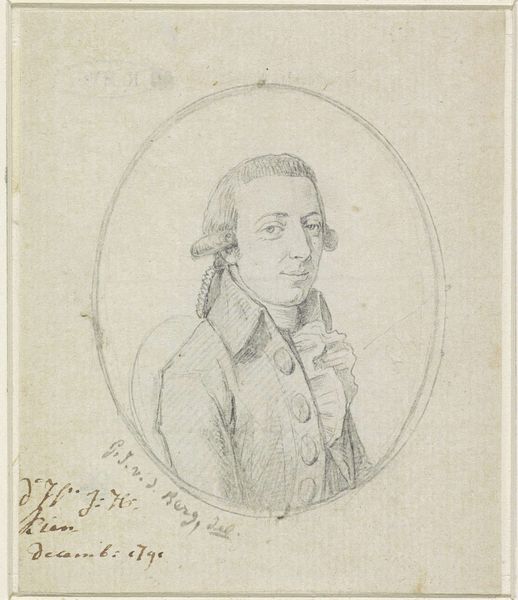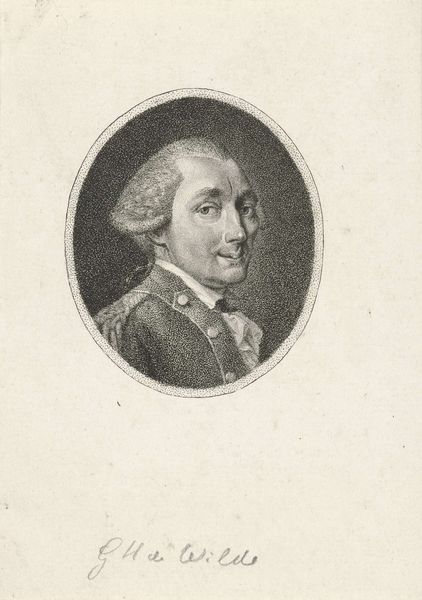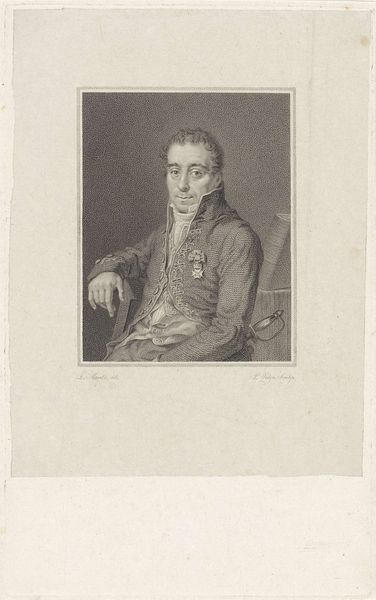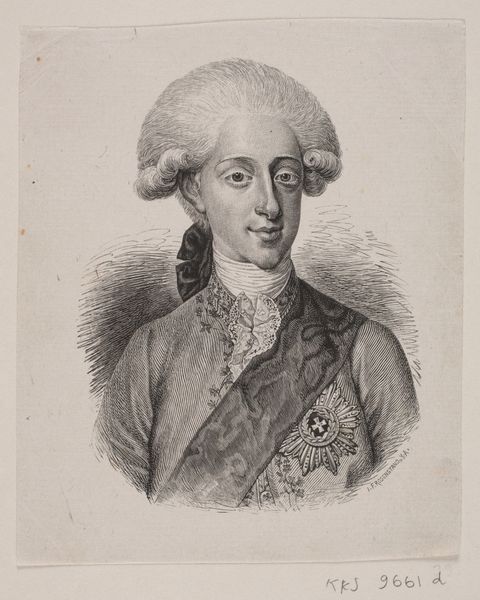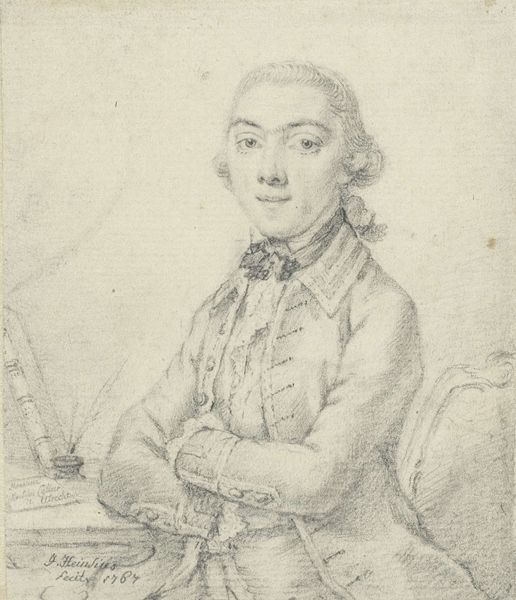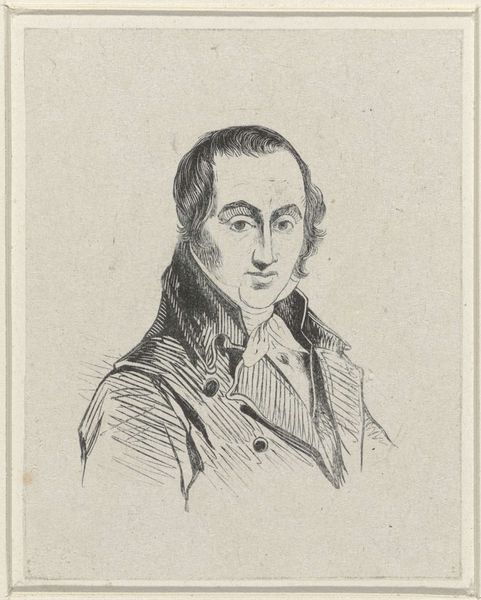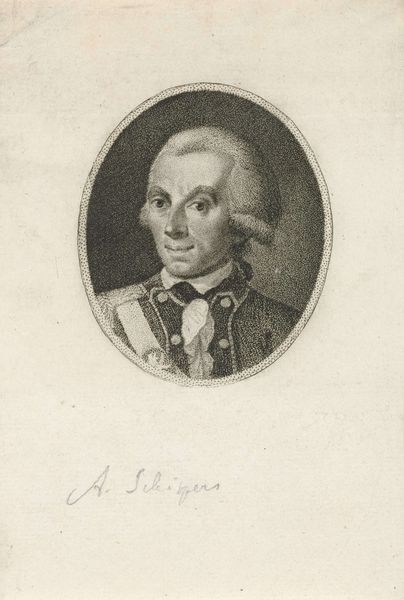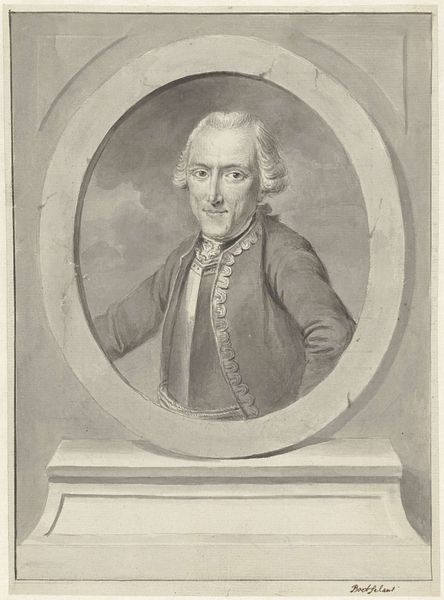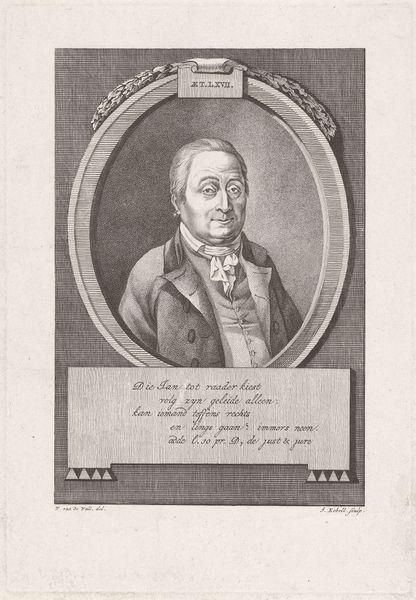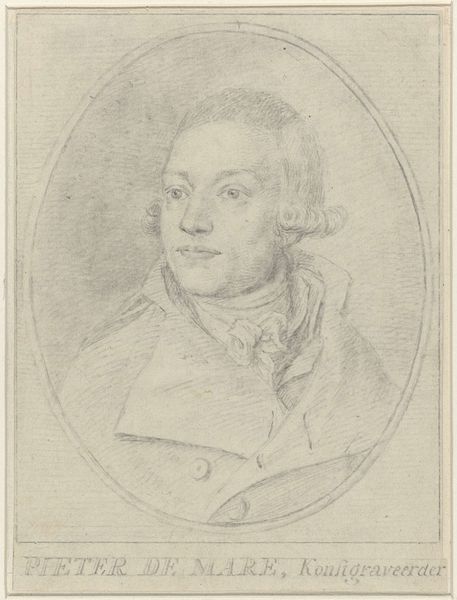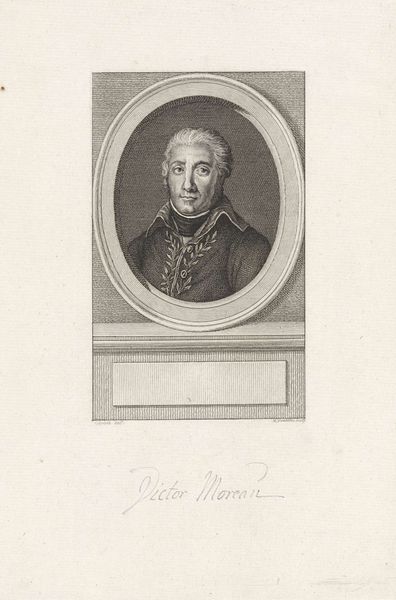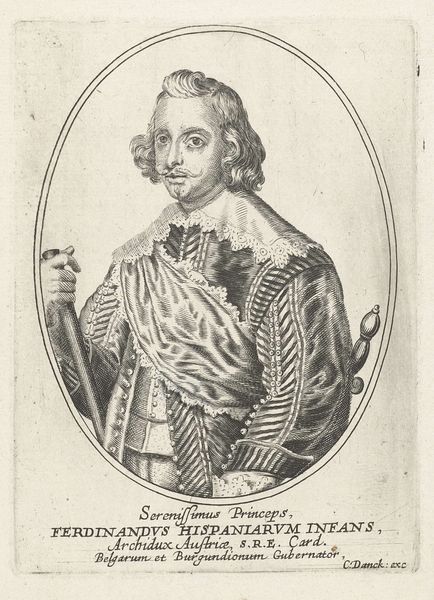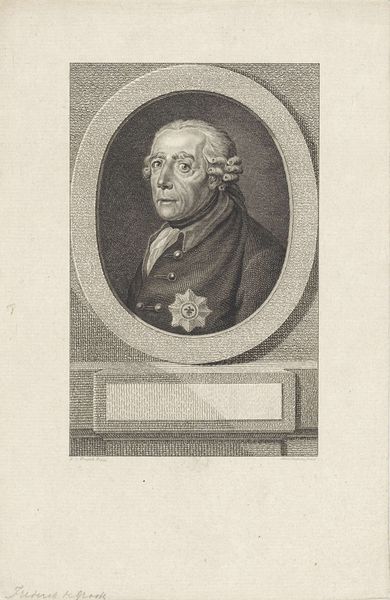
drawing, pencil
#
portrait
#
drawing
#
neoclacissism
#
pencil drawing
#
pencil
Dimensions: height 94 mm, width 75 mm
Copyright: Rijks Museum: Open Domain
Curator: So, here we have Jan Geldorp's "Portret van Leendert Overbeek," a pencil drawing created sometime between 1820 and 1884. It’s firmly situated in the Neoclassical period, a moment marked by particular interests in the self, individuality, and status. Editor: He looks almost… ghostly? There’s a delicateness, almost an ethereal quality, about the rendering. It's very subtle. I am really drawn to the almost photographic effect from just the simple use of pencil on paper. Curator: It's fascinating how the artist uses line and shadow to capture not just the likeness of Overbeek, but also something of the period's fascination with social hierarchies. The style, for instance, reinforces particular ideals around masculinity. I find it difficult not to question how these aesthetic decisions connect to broader structures of power during that time. Editor: I hear you. But I’m also intrigued by the sheer vulnerability that the work evokes. The details of his costume hint at his background, yet there's this expression, almost melancholy, that transcends any purely decorative aspect. You wonder what thoughts are brewing behind those eyes. Curator: Absolutely. I would also venture to argue that the choice of pencil itself can be significant. The fact that it’s not a painting immediately introduces a certain level of what one might think of as precarity; drawing also has direct connotations with sketch and study, thereby becoming representative of someone still learning and evolving, perhaps paralleling the subject's personal development within society. Editor: Precisely. What strikes me most is how much of Overbeek's spirit, of his intangible self, comes through despite the formality and traditional poses that might restrain it. And to think a humble pencil made this all possible… it kind of humbles me. Curator: Considering this piece, particularly its aesthetic context and the means employed, it brings forth important points to consider about artistic expressions relative to sociopolitical constructs that, even today, may go unrecognized. Editor: Ultimately, it reminds me that a portrait is always more than just a face; it's a conversation between an artist, a sitter, and inevitably, us, across the span of years.
Comments
No comments
Be the first to comment and join the conversation on the ultimate creative platform.
